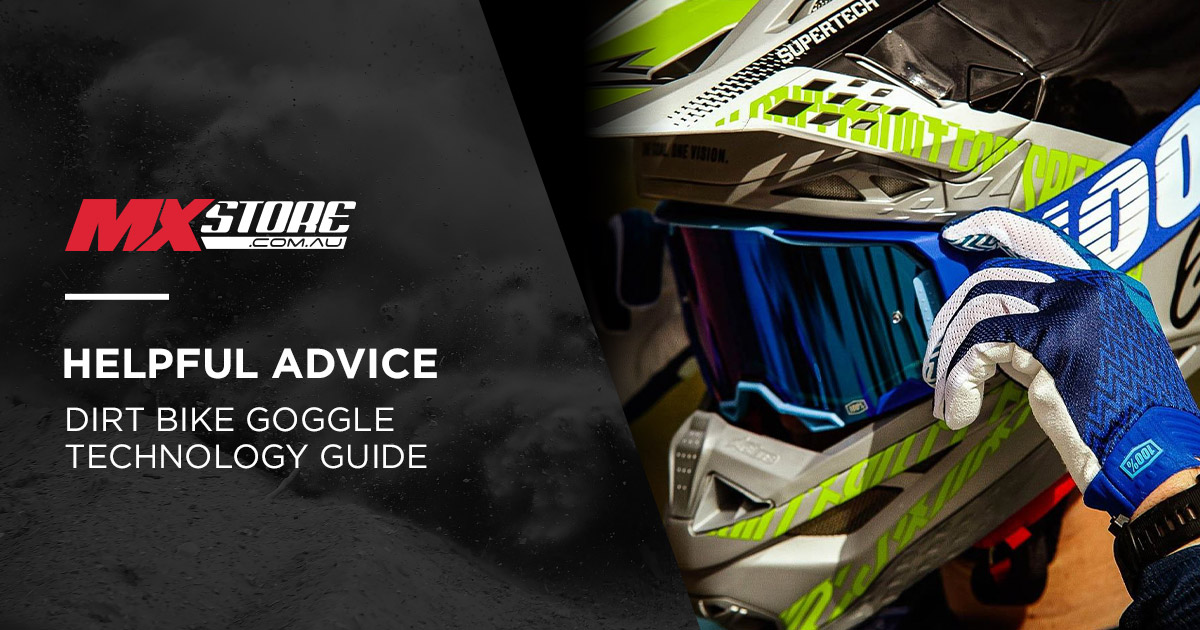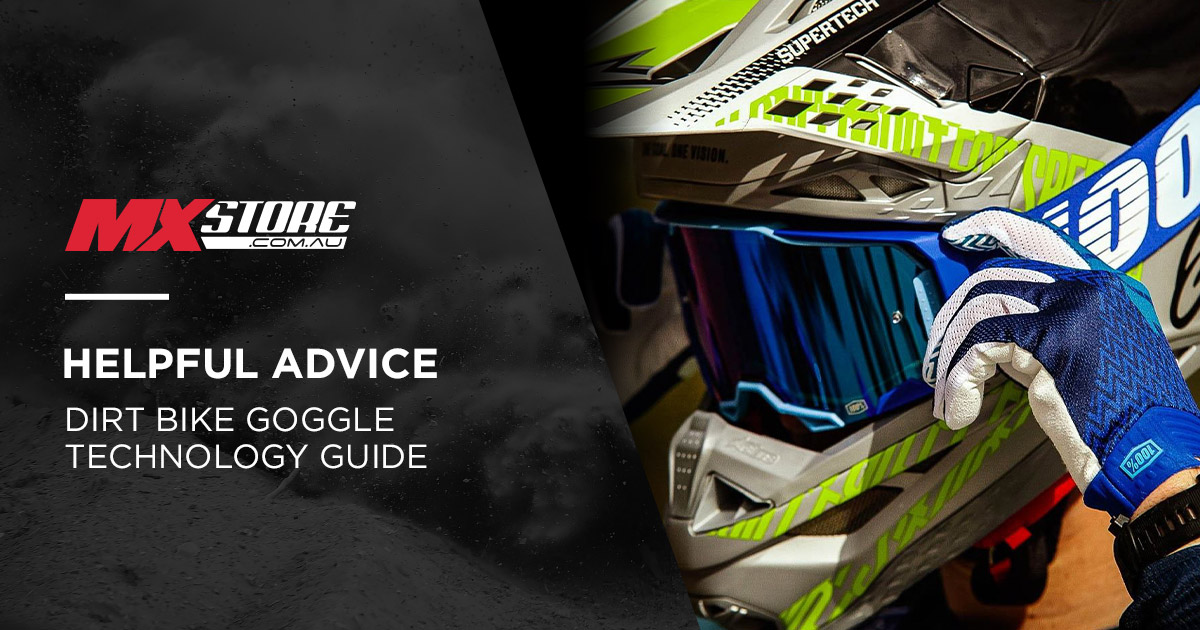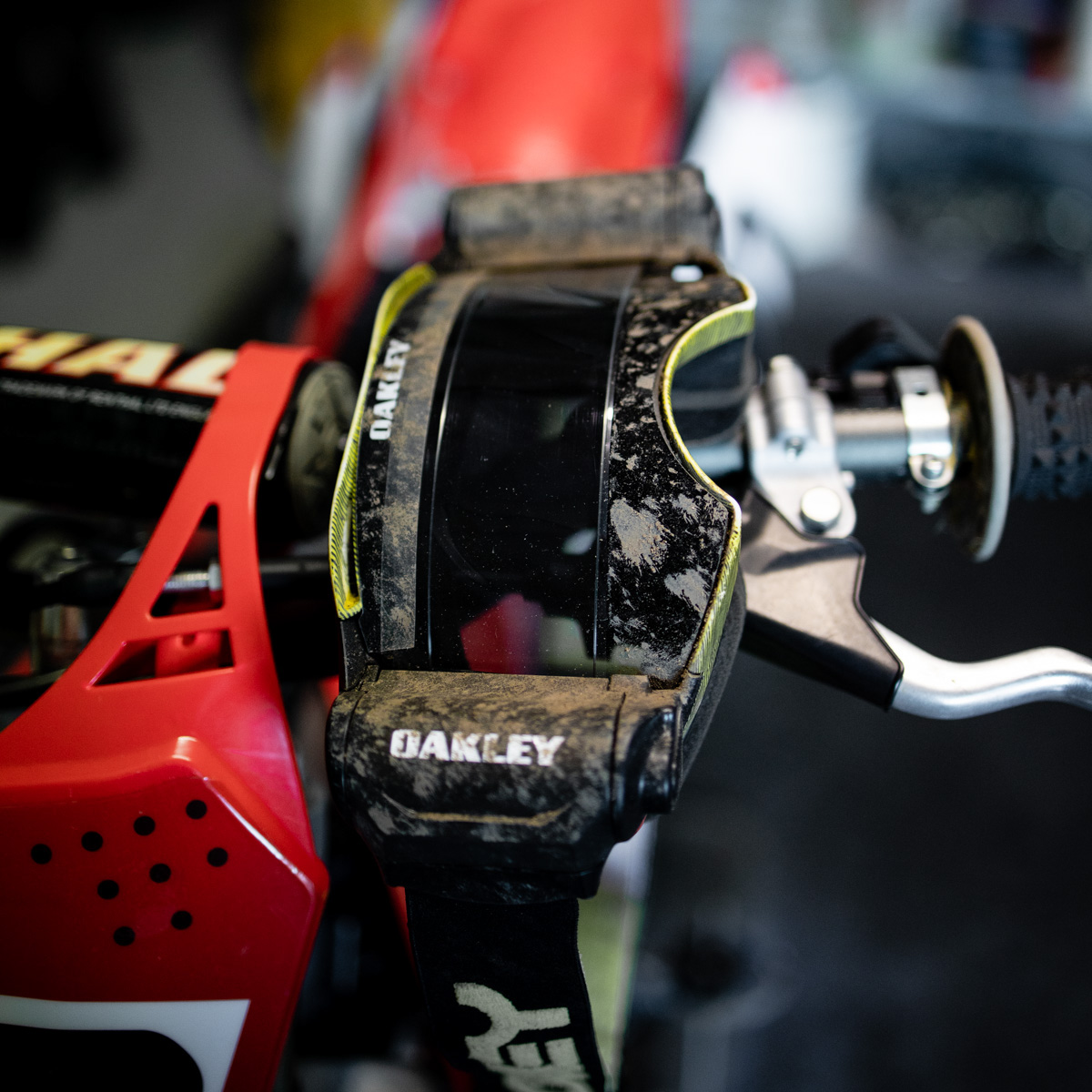Dirt Bike Goggle Technology Guide

 Dirt bike goggles have taken leaps in technology in the past decade, where they now offer superior vision, comfort and protection.
Dirt bike goggles have taken leaps in technology in the past decade, where they now offer superior vision, comfort and protection.
In this guide, we cover the latest tech in motocross goggles and how it benefits you.
Dirt Bike Goggle Technology:
Lens lock/quick release system: The majority of your high-end goggles nowadays feature the ability to rapidly switch out your goggle lenses. Oakley uses innovative technologies such as Switchlock and Ridgelock to ensure riders with their premium goggles can switch their lenses in a matter of seconds, while Scott Prospect Goggles feature a lens lock system that offers secure positioning of the lens while still being able to quickly switch between different lenses. Most brands have moved to a quick release system on their premium MX goggles, making lens replacements an absolute breeze.
Triple-layer face foam: Your top-level goggles will usually offer triple-layer face foam, offering superior comfort compared to more affordable goggles on the market, which generally have one or two layers of foam. This is also extremely useful in terms of sweat and moisture management.
Outriggers: Offering the very best in peripheral vision, outriggers allow the goggle to hold a wider stance and more comfortable fit in the helmet while not taking away any of your vision. Extended outriggers are a key component of most top-end goggles, making for the best fitment and comfort you can get in a moto goggle.
Widened goggle strap: Premium MX goggles will offer a thicker goggle strap than the more affordable options. Combined with the no-slip silicone lines, the wider strap offers a greater grip on your helmet, ensuring your goggles stay exactly where they need to be when you need them to.
Tear-offs: Goggle tear-offs are used by motocross riders to clear their vision after getting covered in roost during a race - they're essentially a thin plastic sheet that covers the goggle, and riders simply tear them off for clear vision. Riders will stack anywhere from just one tear-off all the way through to 24 tear-offs, depending on how long they're racing for and what conditions they're racing in. Tear-offs come in a standard, individual version, or as a laminated stack. The laminated stack is a pack of tear-offs that are stuck together (yet easily removed!), this prevents water or dirt getting between each tear-off, while vision is greatly improved, especially if you're stacking multiple packs of tear-offs. In recent years, Motorcycling Australia has moved to ban tear-offs unless tracks seek an exemption, which has prompted many riders to switch to a roll-off system. Tear-offs can still be used at tracks that have an exemption.

Roll-off systems: Roll-offs are a system that you fit your goggles that allow you to continually have clear vision until the roll of film runs out. There are two canisters at either end of the goggles - one is the clean side where the fresh film sits on the right, while the other side is where the 'dirty' film goes and sits alongside a pull system. The film, usually around 40mm, goes across the goggles in line with your eyes, and is activated by pulling the string on the left-hand side. Once pulled, which you may have to do twice to get the full width of your goggles, you'll have a clean strip of vision.
OTG: OTG, or over the glasses, are goggles designed for riders who need to wear glasses while riding. Not every manufacturer makes OTG goggles, however just look for the 'OTG' tagline for riding goggles that will accommodate your glasses.
Lens Types:
Clear: A clear lens is the most the common type of lens found of dirt bike goggles, and they're also the most popular too. A clear lens works best in the way that it doesn't change what you see, however this can impact in some conditions, such harsh sunlight or dark shadows.
Tinted: Tinted lenses, which generally come in the form of a mirrored lens, are also a popular choice amongst riders. They work incredibly well in bright conditions and are able to tame the light coming through, while they also look pretty cool as well.
Yellow/amber: A yellow or amber lens isn't the most common lens used in motocross or enduro, however it is an option made available by a selection of manufacturers. Yellow/amber lenses are designed for use in low-light conditions as they assist the brightening the scene, such as riding through thick bush/forests, or at a night event, such as a stadium cross.
 Light sensitive: Light sensitive lenses are the latest and most advanced in lens technology. They work to cut down glare and harsh rays, yet at the same time, they lift light in dark shadows. They're incredibly handy for riding in conditions where light is constantly changing. Light sensitive lenses include Oakley Prizm, Scott Light Sensitive, and more.
Light sensitive: Light sensitive lenses are the latest and most advanced in lens technology. They work to cut down glare and harsh rays, yet at the same time, they lift light in dark shadows. They're incredibly handy for riding in conditions where light is constantly changing. Light sensitive lenses include Oakley Prizm, Scott Light Sensitive, and more.
Anti-fog: While most dirt bike goggle lenses come with anti-fog properties, there are lenses that go a step further in preventing fogging. They do this by using a dual-layer anti-fog lense, which is ideal for riders who are spending significant time on the bike without removing their goggles or are riding in low temperatures.
The best part about motocross goggles and their tech is that they're highly customisable for your needs - while the top of the range goggles will have outriggers, superior comfort, and wider field of view, you can still fit out more affordable options with roll-off systems, anti-fog or light sensitive lenses.
Comments (2)